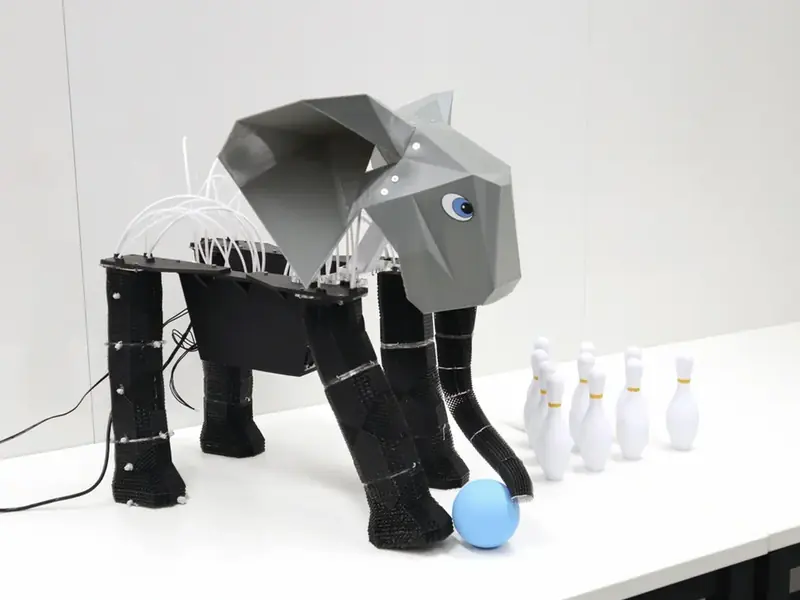
According to a new study by Swiss scientists, the world’s first elephant robot can pick flowers and roll bowling balls thanks to 3D printing technology that mimics biological tissues.
What is this innovative technology?
A team of researchers from the École Polytechnique Fédérale de Lausanne (EPFL) has created a programmable lattice structure that can take on various shapes. This is what allows the elephant robot to make flexible movements. For its legs, the scientists used a sturdier “bone-like” material that prevents the little elephant from falling over.
The researchers demonstrated the advantages of the lattice design by showing how the elephant robot carefully plucks a flower with its trunk and pushes a bowling ball. In a presentation video, the elephant strikes a small ball against ten pins, knocking down seven of them. The lattice, made from foam, consists of numerous individual blocks that can be combined in different configurations. The team claims that this technology can create more than a million configurations. This, in turn, will enable the production of lightweight and adaptive robots, as reported by Live Science.
“We used this technology to create the elephant robot, mimicking the musculoskeletal system; the soft trunk can twist, bend, and rotate, while the hip, knee, and ankle joints are stiffer,” said the lead author of the study, Zinhua Guan.
Most robots, including the most advanced humanoids, are quite clumsy in their movements compared to humans and animals. As the researchers noted in their report, “the diverse movements of humans are facilitated by a network of muscles, tendons, ligaments, and bones that typically work together, and this complex structure is not easy to replicate in robots.”
A Breakthrough in Evolutionary Engineering
The elephant’s trunk is an extraordinarily complex example of evolutionary engineering. It contains about 90,000 bundles of muscle fibers known as muscle fascicles. These allow the elephant to use its trunk as a multifunctional tool.
The complexity of the 3D-printed lattice structure is due to its individual cells. These cells have two main geometric shapes that provide different levels of stiffness and deformation properties. Moreover, researchers can create hybrid forms that vary between these two primary shapes, opening up even more possibilities for variations.
“Our technology enables continuous spatial mixing of stiffness profiles and allows for the creation of numerous complex structures,” emphasized co-author of the study, Benhui Dai, a graduate student at the EPFL lab.
The results of the study were published in the journal Science Advances.
